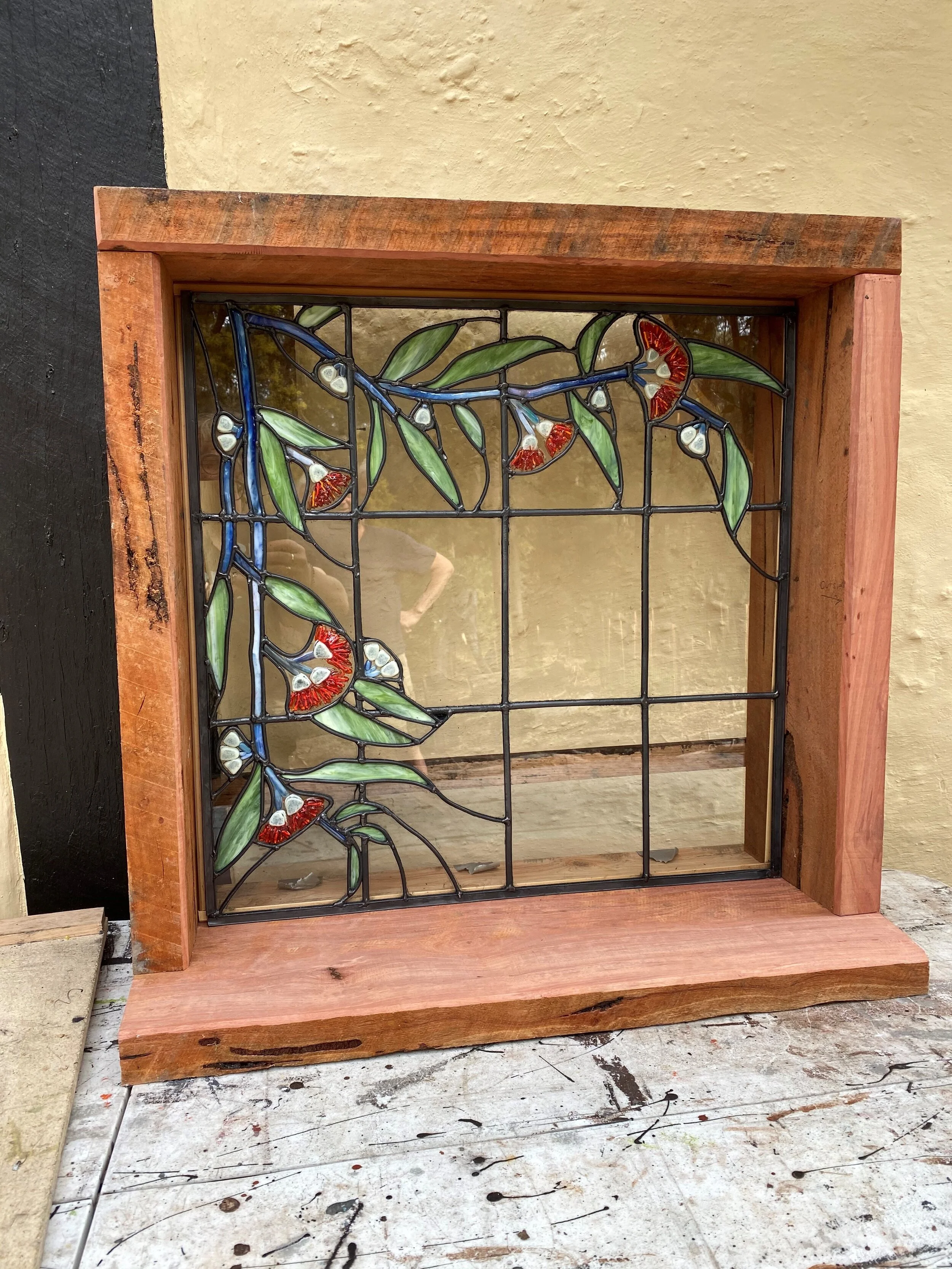Hi, I'm Fiona. Thanks for stopping by to learn more about me and Behind the Glass.
Have you ever experienced an absolute 'coming home' moment? A time when you embraced a long-held desire and found your tribe in doing so?
I had such a moment, and lucky for me, I struck gold on both fronts.
Within an hour of my first Leadlighting class at a local community arts centre back in 2017, it was clear that I was in the right place and that working with glass was my creative future.
I had long-dreamt of working with glass and shifting my creative energies from writing and editing, to using my hands in a more physical and tactile way. Some like their hands immersed in the earth; I’ve discovered I like mine gripped on glass cutters.
…And so began my journey into the art of leadlighting: cutting, grinding, soldering, shaping, and designing—and making many mistakes as I went along. My teacher, Bronwyn De Bondi, is the master; I will forever be her student.
Fortunately, the town I live in—Eltham, in Melbourne, Australia—is full of artists. So, it wasn't long before I stumbled across a local contemporary glass artist, Jacquie Hacansson (www.reddoorstudio.com.au), and was inspired to add glass fusing — kiln-formed glass — to my glass-repertoire.
I also became inspired by Garrett Sadler, a USA-based glass artist. Now, every time I see a new piece of Garrett’s work, it's like I'm given another clue to the code that unlocks the secrets of the glass artist's door. Here's her site: http://www.garrettsadlerglass.com/index.html
(Bronwyn, Jacqui and Garrett are Artists; I don’t claim the capital A yet, as I’m still learning and still growing as a ‘little a’ artist.)
Then, just as I was on a roll, immersing myself in a new way of working with glass, Covid 19 hit, and with it, lockdowns. Thankfully, I had purchased my very own baby Paragon kiln (‘Kiln Bill') and started experimenting with glass fusing at home. That was four years ago. I've since bought two larger kilns ('Bigger Bill' and his big brother, Billiam), which has allowed me to further expand and refine my newly-found craft.
I loved creating, playing and sharing my creations with others. Before too long, people started asking to purchase my work, and although at first I felt strange about putting a price on what I’d made, I realised I had an opportunity to give back. Now, every time someone purchases a piece of work from Behind the Glass, the money spent will be sent directly into the bank account of a refugee in need. Why? Well, there's a personal reason for this. Read here.
WHAT IS GLASS FUSING?
Here’s what Wiki says:
Glass fusing is the joining together of pieces of glass at high temperatures, usually in a kiln. This is usually done roughly between 700 °C and 820 °C, and can range from tack fusing at lower temperatures, in which separate pieces of glass stick together but still retain their individual shapes, to full fusing at higher ones in which separate pieces merge smoothly into one another.
Like this piece pictured here.
Each firing/fusing can range from five hours to 15 hours, and often, pieces are re-fired and refined over and over until the desired outcome is reached. (If you’re into instant gratification, this ain’t the gig for you. Just sayin’.)
There’s nothing like raising the cooled-down kiln each morning to see if what you’d envisioned has been perfected. Sometimes it’s ‘oh wow!’, and sometimes it’s ‘oh nooooooo!’.
Repeat process.





